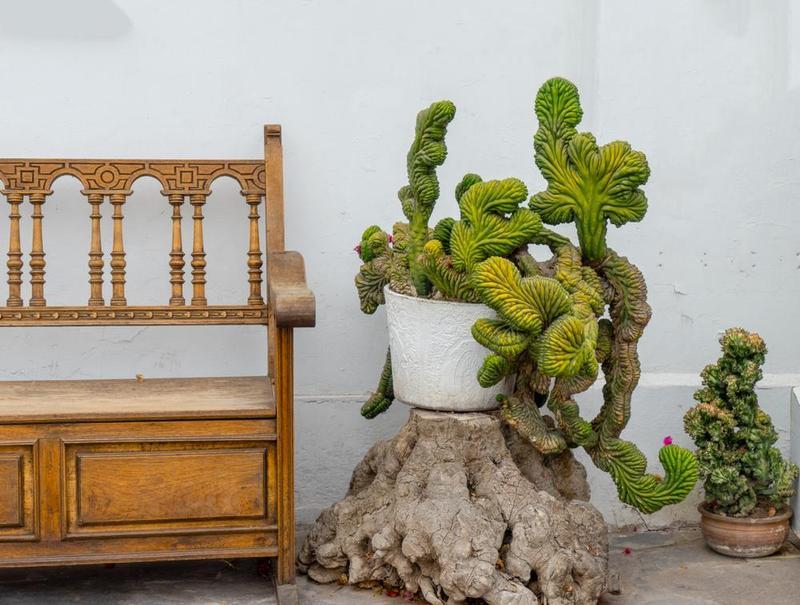Cactus of Mystery – Learning ShamanismMar 18, 2021
Originally published in 2013 ‘Cactus of Mystery: The Shamanic Power of the Peruvian San Pedro Cactus’ is written by Ross Heaven, with additional contributions from David Luke, Eve Bruce, Morgan Maher and others. Heaven is a psychologist, healer and workshop facilitator. He has authored more than ten books, including ‘Plant Spirit Shamanism’ and ‘Shamanic Quest for the Spirit of Salvia.’
The mescaline containing cactus San Pedro, Trichocereus pachanoi, has been a very little tackled subject to date in pharmacography. As Heaven notes at the very start of Cactus of Mystery: “If you are reading this book you are in a privileged minority, for almost nothing has been written about San Pedro or its use in shamanism and healing” (Heaven 1). Of its literary precursors, there is one previously written by Ross Heaven, The Hummingbird’s Journey to God (2009); Trout’s Notes on San Pedro (2005) and Douglas Sharon’s Wizard of the four Winds: A Shaman’s Story (1978). In many respects, therefore, Cactus of Mystery is a broad-minded survey that aims at correcting the paucity of information and opening the vista of discussion about this intriguing plant.
Heaven and several other contributing writers explore the cultural, historical, theoretical, chemical and botanical territories of San Pedro, areas that have become such familiar turfs in the exploration of plant based medicines/hallucinogens. Its use, like other currently in vogue substances such as ayahuasca and peyote, is first noted within the shamanic context of the Americas: “Shamanism is not a discrete activity like, say dentistry or aromatherapy, but a body of practices that have the effect of connecting the material and immaterial worlds, the worlds of man and God, matter and energy. These practices are performed by shamans who, by various means and methods […] are able to travel between worlds to obtain solutions from their spirit guides and helpers” (Heaven 36) The socio-cultural side, therefore, is dominated through the study of shamanism, which although a broadly used term, comes to define here the processes through which San Pedro is contextually employed. In this book, along with a discussion on the facets of shamanism, Heaven interviews a number of practicing shamans, with whom he has personally studied and undergone ceremonies. These include the practitioners Ruben Orellana and La Gringa and come from a number of interesting perspectives, which include traditional, academic and more contemporary, syncretic forms of San Pedro using shamanism. La Gringa’s story reflects what has become a well-trodden path to becoming a shaman in modern times. A South African, she had first travelled to the Andes in the 1990s: “From the age of thirteen I suffered from severe depression, right up until I started drinking plant medicine at about the age of thirty-eight” (Heaven 87). Overcoming her own personal pathologies, she became a shaman and, while implementing some of the traditional methods, like a mesa (altar) and important Andean symbology such as the puma, serpent and condor, she has created a form and methodology that she is particularly comfortable with in her practice. Treating mostly Westerners, “who didn’t understand those rituals [singado and contrachisa] anyway,” she was bound to evolve the San Pedro practice; for her own needs and those of her participants.
One begins to see, from reading this book, how shamanism itself may change over time, depending on those who employ it, but the central societal facet, or role, of healing remains. PsypressUK contributor Dr. David Luke has a chapter included entitled Notes on Getting Cactus Lodged in Your Reducing Valve: San Pedro and Psychic Abilities. A champion of the philosopher Henri Bergson’s reducing-valve model of the brain, which was eloquently geared toward psychedelic experiences by Aldous Huxley in his seminal work Doors of Perception (1954), Luke details his journey to South America in order to conduct psi experiments on San Pedro shamans. Unfortunately, he was not allowed to use his computer during experiments and instead put himself through the process! Personal healing in the shamanic context is very often entwined with both a recognition of our place within the environment and, moreover, for Western participants, a sort of guilt over its treatment by the industrialized nations—this leads to a very strong discourse about planetary healing that is found throughout shamanic pharmacographies. While this sometimes appears as a call-to-arms, as if we are the only possible saviours, Heaven actually takes the planetary view, as opposed to simply repackaging the anthropocentric discourse: “Some of the environmental and economic shifts we are seeing now may be evidence of that correction but while we regard them as problems, to the Earth they may simply be the sore throat and runny nose of a cold that is a healing response to a virus that is screwing up its system. Even if all human beings were, like so much mucus, wiped off the face of the planet tomorrow, the Earth would survive and so would its other species” (Heaven 207).
In conclusion, due to the paucity of literary information on San Pedro, this is a particularly needed book for not only does it bring this cactus to a wider audience, raising awareness of its potentials for healing, it also manages to bring together diverse and interesting disciplinary takes on the plant. Heaven, whose own knowledge and experience is clearly a wealth in itself, has collated an admirable selection of texts that provides the reader with a thorough perspective. Although much of the discourse will be familiar to anyone who has read about ayahuasca and peyote, it is, I hope, the foundation for more intricately San Pedro related works.
Be the first to post a message!
